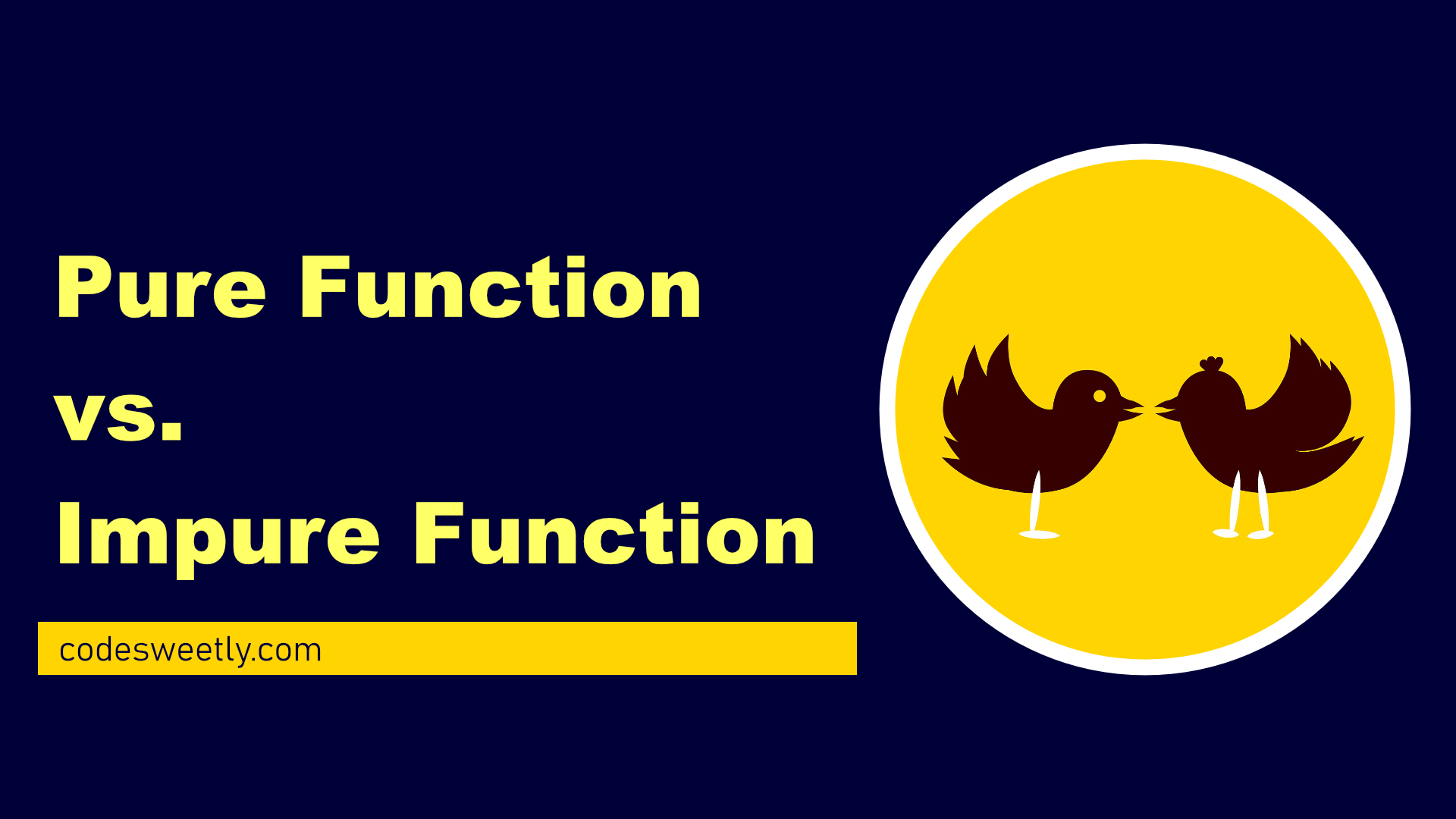Pure functions and impure functions are two programming terms you will often see in functional programming.
One core difference between these two types of functions is whether or not they have side effects.
In this article, you will learn what side effects are and we'll discuss the differences between pure and impure functions.
Without any further ado, let's get started with side effects.
What is a Side Effect?
A side effect occurs in a program whenever you use external code in your function — which, as a result, impacts the function’s ability to perform its task.
So what exactly does this mean? Let's see with some examples.
Side Effect Example 1: How to add an old value to a new one
let oldDigit = 5;
function addNumber(newValue) {
return oldDigit += newValue;
}In the snippet above, oldDigit’s usage within the function gives addNumber() the following side effects:
First side effect: Dependency on oldDigit
The fact that addNumber() depends on oldDigit to successfully perform its duties means that whenever oldDigit is not available (or undefined), addNumber() will return an error.
Second side effect: Modifies external code
As addNumber() is programmed to mutate oldDigit’s state, which implies that addNumber() has a side effect of manipulating some external code.
Third: Becomes a non-deterministic function
Using external code in addNumber() makes it a non-deterministic function — as you can never determine its output by solely reading it.
In other words, to be sure of addNumber()’s return value, you must consider other external factors — such as the current state of oldDigit.
Therefore, addNumber() is not independent — it always has strings attached.
Side Effect Example 2: How to print text to your console
function printName() {
console.log("My name is Oluwatobi Sofela.");
}In the snippet above, console.log()’s usage within printName() gives the function side effects.
How does console.log cause a function to have side effects?
A console.log() causes a function to have side effects because it affects the state of external code — that is, the console object's state.
In other words, console.log() instructs the computer to alters the console object's state.
As such, when you use it within a function, it causes that function to:
- Be dependent on the
consoleobject to perform its job effectively. - Modify the state of an external code (that is, the
consoleobject’s state). - Become non-deterministic — as you must now consider the
console’s state to be sure of the function’s output.
Therefore, whenever you use external code in your function, that code will cause side effects.
So how do side effects relate to pure and impure functions?
Let’s find out by looking at the definition of a pure function and its impure alternative.
What is an Impure Function?
So now that we know what side effects in functions are, we can talk about impure (and pure) functions.
First, an impure function is a function that contains one or more side effects.
Consider the JavaScript code below:
const myNames = ["Oluwatobi", "Sofela"];
function updateMyName(newName) {
myNames.push(newName);
return myNames;
}In the snippet above, updateMyName() is an impure function because it contains code (myNames) that mutates an external state — which gives updateMyName() some side effects.
What is a Pure Function?
A pure function is a function without any side effects.
Consider the JavaScript code below:
function updateMyName(newName) {
const myNames = ["Oluwatobi", "Sofela"];
myNames[myNames.length] = newName;
return myNames;
}In the snippet above, notice that updateMyName() does not depend on any external code to accomplish its duties. This makes it a pure function.
Wherever possible, you should use pure functions in your applications. Let's discuss some of the advantages you get by doing so.
Advantages of Pure Functions
The following are some advantages of pure functions.
Pure functions are independent
Pure functions do not affect any external state, and they are also not affected by external code.
In other words, all external data a pure function uses gets received as parameters — they are not explicitly used internally.
Therefore, what you see within is what you get — there are absolutely no strings attached.
As such, you don’t need to look for external conditions (states) that might impact your pure function's effective operation as all activities happen within.
Pure functions are easier to read
Pure functions are easier to read and debug than their impure alternatives.
Pure functions are so readable because they are solely dependent on themselves — they neither affect nor are they impacted by external states.
Important Stuff to Know about Pure Functions
Keep these three essential pieces of info in mind whenever you choose to use pure functions.
You can clone an external state into a pure function
Cloning an external state into a pure function does not make the function impure.
State duplication is simply a copy-and-paste operation that does not leave any strings attached between the source and its clone.
Example:
const myBio = ["Oluwatobi", "Sofela"];
function updateMyBio(newBio, array) {
const clonedBio = [...array];
clonedBio[clonedBio.length] = newBio;
return clonedBio;
}
console.log(updateMyBio("codesweetly.com", myBio));In the snippet above, updateMyBio() used the spread operator to duplicate myBio’s state into clonedBio. However, it is still a pure function because it is neither dependent on myBio nor does it modify any external code.
Instead, it is an exclusively deterministic function programmed to use the cloned version of its array parameter.
Avoid code mutations in pure functions
Technically, you can mutate variables defined locally within a pure function’s scope. However, it is best to avoid doing so.
For instance, consider the code below:
const compBio = ["code", "sweetly"];
function updateCompBio(newBio, array) {
const clonedBio = [...array];
clonedBio[clonedBio.length] = newBio;
return clonedBio;
}
console.log(updateCompBio(".com", compBio));In the snippet above, updateCompBio() is a pure function that uses clonedBio[clonedBio.length] = newBio to alter its local state.
Although such an operation does not make updateCompBio() impure, it is not the best practice.
The recommended way to write a pure function is to make it receive all its values as parameters like so:
const compBio = ["code", "sweetly"];
function updateCompBio(newBio, array) {
return [...array, newBio];
}
console.log(updateCompBio(".com", compBio));Notice how clean and portable our code now looks. This is an advantage of making your pure function receive all its values as parameters. By so doing, you will also find it easier to debug your code.
The same input will always return the same output
A vital trait about pure functions is that they will always return the same value with the same set of inputs — no matter how many times you invoke them.
Wrapping it up
Your function is pure if it does not contain any external code. Otherwise, it is impure if it includes one or more side effects.
In this article we discussed what pure and impure functions are, and we learned about the advantages using pure functions can bring to your code.
Thanks for reading!

